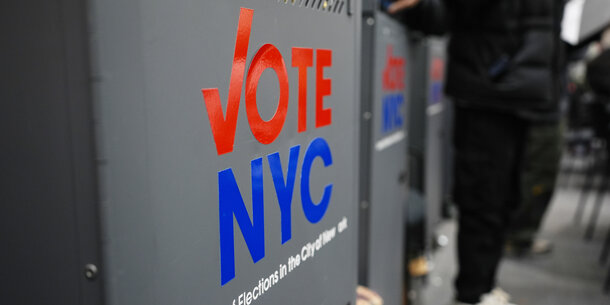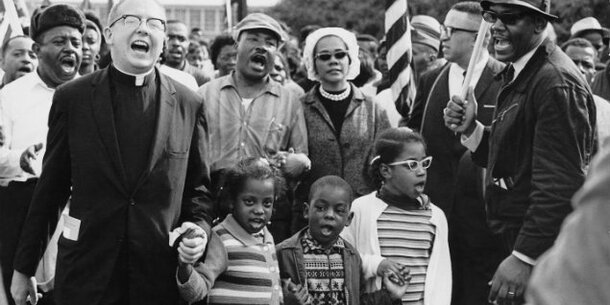Time is short to make needed changes to our elections systems to give voters convenient, safe options for returning their ballots amid the Covid-19 pandemic. One possibility that has received less attention is to allow voters who have requested an absentee ballot to return it to a polling place, particularly at early voting sites.
This voting option has been used in states where absentee voting is highest, and it has a number of advantages: it relies primarily on existing infrastructure and can be implemented quickly and safely during early voting periods, when polling places are less crowded.
Millions more voters than usual are expected to choose to vote absentee, many for the first time. As the election approaches many voters are likely to have an absentee ballot they want to cast but will miss the deadline to mail them. Most states do not accept ballots received after Election Day or only accept them for a short window after. Given the delays in the mail, voters who have not cast their ballots well in advance of Election Day will not be confident they can vote by mail.
Some states have made changes to make returning absentee ballots more convenient, but on the whole, most voters will have limited choices. For example, most states do not make secure drop boxes where ballots can return their ballots without postage widely available. Many states limit voters’ options to give their ballot to someone else to return for them. A majority of states do not pre-pay postage for voters to return absentee ballots.
With strict absentee voting deadlines, mail delays, and limited choices for returning ballots, voters could face no alternative but to vote in-person. However, many voters requested absentee ballots precisely because they have concerns about voting in person. These voters could be forced to choose between their vote and their health.
Another approach that has been used successfully in some states is to allow voters to take their absentee ballots to voting locations during the early voting period and on Election Day. This option is popular with voters. For example, in California, in the counties that sent every voter a ballot in 2018, 22 percent of voters who used mail ballots dropped them off at a vote center. A recent poll of Black voters found that 21 percent said that if it was up to them they would drop their absentee ballots off at a polling place.
Allowing voters to return their ballots at polling places would vastly expand the number of places for voters to return them without a need to acquire and install a great deal of equipment. This makes the policy cheaper than other options for expanding the return of absentee ballots, like drop boxes (which can cost up to $10,000 each) and paying for postage (which could cost millions of dollars in some states). To implement this policy, counties largely just need some signage and a secure container to collect the ballots.
The practice also poses fewer risks to voters and poll workers than in-person voting because voters will not have to spend much time inside a polling place — if the process is designed efficiently. For example, there could be a dedicated line spaced a safe distance from other voters to allow for quick ballot drop-off with a poll worker. Elections officials could even have a poll worker outside accepting ballots so that voters never have to enter the polling site.
Most importantly, returning mail ballots to polling places will avoid risks of postal service delays resulting in rejected ballots. During the primaries, late arrival caused thousands of ballots to be rejected. And if voters know they have the option to return an absentee ballot without risking the mail, more might even be inclined to request one and avoid voting in-person.
We know that letting voters drop off ballots at polling places can be implemented safely and securely. In fact, the five states that regularly conduct primarily vote-by-mail elections all offer this option. Elections officials have established practices in those states that will help with the successful implementation of polling place drop-off.
One is to allow voters to return their absentee ballots to polling places throughout the early voting period, when traffic tends to be lighter. Further, the workers who are present during early voting are more likely to be effectively trained on how to handle ballot drop-offs because that particular crop of poll workers often have more experience with the election process than a typical poll worker who only volunteers on Election Day.
Allowing voters to drop ballots off on Election Day when traffic at polling places is heaviest is certainly doable, but it introduces the need for additional troubleshooting to ensure that ballot drops offs would not add to crowds and lines that can increase the risks of exposure to the coronavirus. One way around this would be for election officials to ensure there is staff capacity and space to set up a table dedicated to accepting absentee ballots. Since voters dropping off ballots typically do not have to check-in, this alternative line could let voters get in and out efficiently without contributing to a bottleneck at the regular check-in station.
Another important consideration is ensuring security. The ballots must be deposited in a secure container and there must be protocols to ensure there is a robust chain of custody for the return of the ballots.
Elections officials must also ensure the right supplies are available. Polling places will need replacement mail-ballot envelopes available in case voters try to return their ballot without one. There will also need to be prominent signage notifying voters of the process for dropping off a ballot and directing people to the appropriate poll workers. This way voters can avoid unnecessary waits and crowding.
Finally, poll workers will need to be adequately trained to handle mail ballots that are dropped off. The workers will have to check that ballot envelopes are complete and to help resolve other issues, like if envelopes have a missing signature from a voter, witness, or third-party delivering the ballot.
With some planning, training, and voter education, large numbers of voters can drop off absentee ballots at polling places safely, securely, and on time. Elections officials should try hard to make this an option, especially during the early voting period.


